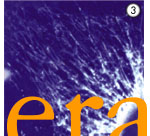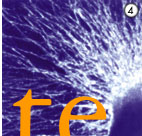



 |
 |
 |
 |
|
Unfortunately, neurological disorders like Parkinson’s and Alzheimer’s disease have often been shrouded in a veil of silence. But, when former U.S. president Ronald Reagan was diagnosed with Alzheimer’s disease five years ago, the debilitating effects of this disease, and others like it, were finally given a voice. Today, there are over 4 million Americans who have Alzheimer’s disease, and recent admissions by public figures diagnosed with conditions like Alzheimer’s and Parkinson’s disease have made millions more aware of the prevalence of neurological illnesses. Until recently, new advancements in the field of neurological disorders—particularly those that challenged previous notions about the pliability of the nervous system—were once thought so far-fetched they could only be realized in one’s imagination. But, as recent research has revealed, there is growing evidence that cell rescue may be achievable. Using state-of-the-art drug design techniques, Guilford scientists and their academic and corporate collaborators have been instrumental in identifying and developing novel compounds that could one day turn the science fiction of nerve regeneration into a reality. The goal of Guilford’s neurotrophic research programs is simple: To advance the therapy of neurological disorders by developing completely novel and revolutionary disease-modifying therapies based on one critical hypothesis—the possibility that science could somehow jump-start damaged nerves and encourage their regrowth and recovery. The result has been a possible breakthrough in nerve therapy, founded on the discovery of compounds called neuroimmunophilin ligands. Neuroimmunophilin ligands are small organic molecules which, in animal models, have demonstrated an ability to actually regenerate nerves damaged by injury or disease, without any apparent effect on normal healthy nerves. To be clear, regeneration is not defined as something which creates new nerves, but rather a process of renewing and restoring surviving nerve cells to a state of improved function. Our objective is to aid in the recovery of diseased or damaged nerves by stimulating them to regrow and branch and re-establish critical connections with neighboring neurons. In so doing, we hope to one day foster the return of function or memory in conditions like Parkinson’s and Alzheimer’s disease. Previous nerve-regeneration compounds, including growth factors, proteins and peptides, could not pass readily into the brain and therefore could only be administered by direct injection into the brain. In contrast, Guilford’s small molecule neuroimmunophilin ligands can be taken orally and are capable of penetrating the brain via the bloodstream. Most importantly, because neuroimmunophilins target only damaged nerve cells, we expect that there will be fewer side effects than with earlier generations of drugs. Preclinical studies have been critical in establishing Guilford’s leadership position in the field. Studies with a variety of preclinical compounds have demonstrated marked effectiveness in promoting cell regeneration to correct damage caused by Parkinson’s disease and other serious neurological disorders. In the next year, in collaboration with Amgen, we hope to put these remarkable findings to an even greater test through the initiation of human clinical trials with our first neuroimmunophilin compound. The Guilford-Amgen Partnership |
||
 Joan Chen Senior Research Associate |
|||
 David Limburg Research Associate |